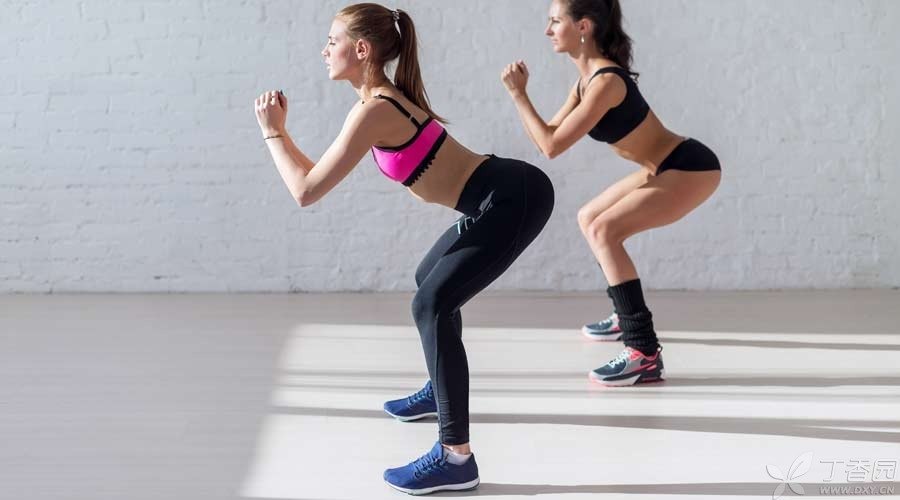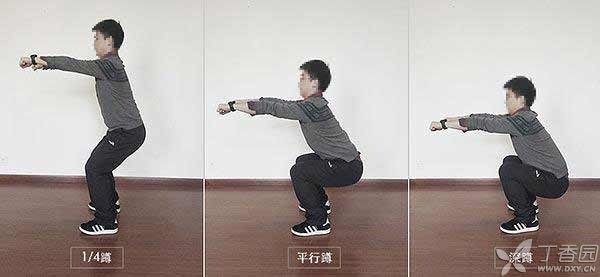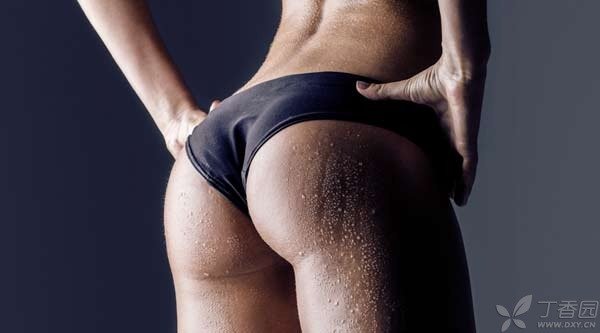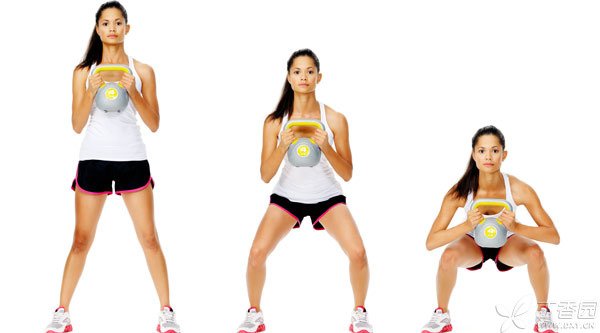
[No squats, no buttocks] [N Benefits of Squats] The Internet is spreading wildly. From fitness coaches to weight loss experts, squats are highly recommended as a magic weapon for fitness and a sharp weapon for strengthening the body. Is squats really beneficial and harmless?
With so many squats, you only know squats?
There are as many as 27 kinds of squats mentioned in the article < > on LiftingRevolution website, which is too dazzling. Let’s talk about the three representative squats of 1/4 squats, parallel squats and squats first.
1/4 Squat: This is what we usually call squat.
Parallel squat: Take the ground as the reference level, the thighs are parallel to the ground when squatting, and the flexion angle of the knee joint is slightly greater than 90 degrees.
Squat: The trainer is required to keep his waist and back straight, sit back as much as possible, lower the hip joint than the knee joint as much as possible, and the knee joint should not exceed his toes.
See the following figure for the three squatting methods:

Squats should not be recommended squats.
Squat: The flexion angle of the knee joint is 15 ~ 30. In order to maintain balance and resist quadriceps femoris, if there is no strong posterior thigh muscle (hamstring muscle), the stress on the anterior cruciate ligament of the knee joint cannot be effectively reduced. Improper training will cause knee joint damage and lumbago instead.
Parallel squat: It also undergoes the process of knee joint flexion of 15 ~ 30 degrees, but the stress on the anterior cruciate ligament of the knee joint decreases greatly when it reaches 60 degrees. Coordinated contraction of muscles ensures that the ligament and cartilage of the knee joint are relatively stable and the possible damage is relatively small.
Squat: The trainer’s hip, knee and ankle joints are required to have certain flexibility, otherwise not only the knee joint but also the waist may be damaged.
From this point of view, parallel squat not only exercises quadriceps femoris, but also has a lot of benefits to the muscles of the posterior thigh group and is relatively safe to the knee joint through its large-scale exercise, so it is the most efficient squat exercise.

If the posture is wrong, squats are easy to get hurt.
When squatting to the maximum range, the tibial plateau moves backward relatively, and the stress of the posterior cruciate ligament increases correspondingly. If there is no strong quadriceps femoris to ensure, injury will inevitably occur.
At the same time, knee flexion, patella and tibia pressure and shear force increased. When the knee joint is stretched, it decreases. When the knee joint flexion reaches the maximum angle, the above pressure and shear force reach the peak. This is an important reason why squat may cause cartilage injury on patellofemoral articular surface and tibial plateau.
After looking at so many bones, joints and ligaments, is it a little dizzy? In short, squats bring a lot of pressure to the relevant joints and bones, and if you don’t take it easy, you will hurt them.
Once cartilage is damaged, it cannot be repaired without blood supply.
Repeated cartilage injury causes the cartilage surface to be no longer smooth and pressure-resistant, which not only cannot serve as the original buffer, pad and lubrication of cartilage, but also the rough cartilage surface and even the exposed subcartilage bone surface after falling off will wear out other normal tissues in the joint.
This is also the reason why many people who squat too much are more prone to knee degeneration and osteoarthritis.
In addition, when squatting, if the pelvis and trunk are not well controlled, when squatting to the lowest point, lumbar flexion and pelvic retroversion will also occur.
Compared with the high efficiency and low risk of parallel squats, squats are not the best choice.
Therefore, for people without knee joint injuries, if the purpose of training is only for health and increasing joint stability, parallel squats are more recommended than deep squats, and the correct deep squats require higher movements. If ordinary people do not master them well, the chances of causing accidental injuries in sports will also increase relatively.

If you want to squat down, look here first.
Of course, we do not deny the benefits of squat exercise (including parallel squat and deep squat), such as the strength and shape of gluteus maximus, which everyone pays more attention to, and correct training will also enhance the stability of knee joint.
For those who take body building as their training goal, or athletes with special functional needs such as heavy competitive events, squat training can also be carried out. However, whether it is parallel squat or squat, professional and scientific guidance must be provided.
First of all, it is necessary to evaluate the functional state and evaluate whether squat training can be carried out. Those who have problems such as insufficient flexibility of lower limbs, cartilage injury of knee joint and insufficient stability of spine cannot directly carry out squat training.
Secondly, standard movements must be done as much as possible during training. Make full warm-up preparations before exercise, including some drafting, jumping, jogging and other flexibility training as much as possible.
When squatting, if problems such as heel off the ground, body leaning forward or shaking, and squatting depth insufficient are found, it indicates that the body may have problems in ankle joint mobility, balance and coordination ability, and core muscle strength, which need to be solved in a targeted way before squatting.
Squat training must follow the principle of gradual and orderly progress, and must not exercise in a large amount of impact training.
It is not advisable to emphasize the benefits of squats while ignoring the potential sports injuries. Sports injuries always occur inadvertently. Instead of waiting for the injury to be remedied, it is better to know whether you must do this exercise and how to do it correctly. After all, there are still many ways to train lower limb muscles.
Squat is risky, please be careful in practice!
Responsible Editor: Painting
